Diy heating system: tips for a beginner
The theme of this article is a do-it-yourself heating system. We have to get acquainted with its main elements, to determine the choice of equipment and materials, with wiring and wiring diagram of heating devices.
So let's get started.
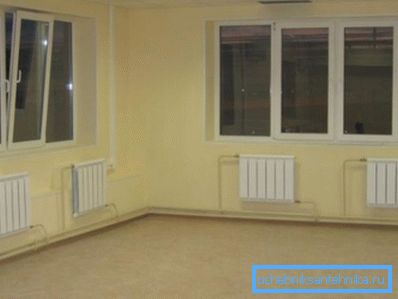
Heat source
How to heat a room located at a considerable distance from the nearest heating main? Obviously, this requires an independent source of heat - a water boiler.
When choosing a type of boiler, it is worth paying attention to its two properties:
- Efficiency. The lower the price of a kilowatt of thermal energy, the lower the operating costs.
- Autonomy of work. Ideally, heating equipment should not require attention to itself.
Let's make the corresponding ratings, and then compare the positions of boilers of different types.
Efficiency
| Heat source | Costs, rubles / kW * hour |
| Gas (highway) | 0.7 |
| Firewood | 1.1 |
| Coal | 1,3 |
| Pellets | 1.4 |
| Gas (cylinders) | 2.8 |
| Diesel fuel | 3.2 |
| Electricity | 3.6 |
It seems that the table does not require any comments. The main gas is leading in terms of cheapness of heating by a wide margin.
Autonomy
But on this parameter, the estimates will be very different from the previous rating.
- The undisputed leader is electricity. The electric boiler does not require any maintenance in one form or another, nor the removal of combustion products. It’s enough for the owner to set the temperature of the coolant or, in the presence of an external thermostat, the air temperature in the room.
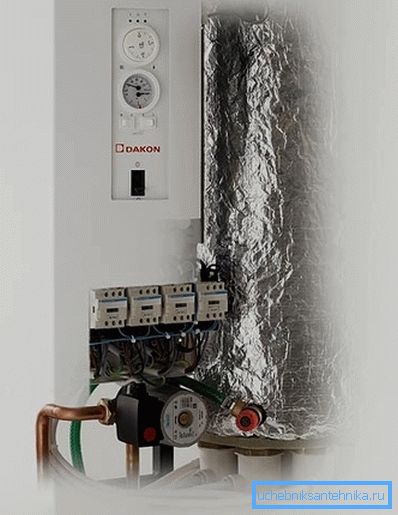
- In second place for ease of use - gas. The arrangement of heating systems with a gas boiler also allows them to work independently and indefinitely, maintaining the set temperature. The owner will only have to additionally attend to the installation of the air duct leading to the street.
To clarify: we are talking about boilers with electronic ignition. Piezo firing makes the boiler non-volatile, but it is necessary to ignite it (in particular, with an extinguished igniter) manually.
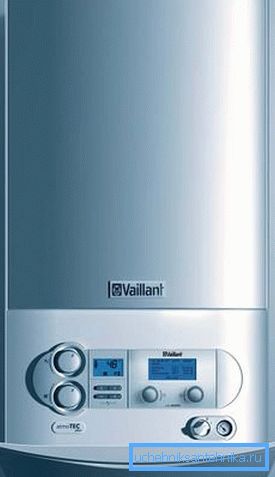
- The use of diesel fuel also allows the system to operate autonomously for a long time.; However, a massive tank with diesel fuel and burner noise, which differs little from aircraft noise during takeoff, make using this heat source less comfortable.
- Pellet boilers with a bunker and an automatic fuel supply provide a somewhat lower level of automation: the bunker has to be loaded periodically, and the bunker will not save you from cleaning the ash pan.
- Finally, solid fuel boilers require the most attention.. Coal and firewood have to be loaded every few hours. The use of gas generators, upper combustion boilers and heat accumulators change the picture for the better, but not so radically.
The conclusions are pretty obvious - if you have the opportunity to use the main gas, other options for the implementation of heating can not be sought.
When choosing a gas boiler should pay attention to a couple more characteristics.
- If the interruptions in the supply of electricity are not systematic, our choice is a product with forced punch and electronic ignition.
- Condensation boilers are more economical than convection boilers by 9–11%. They utilize not only the heat of combustion of gas, but also the energy released during the condensation of combustion products.
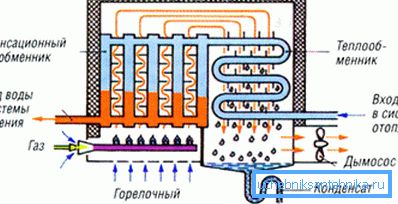
Thermal power
How to build a heating system that will provide the house with the necessary amount of heat? Obviously, it is worth starting with the calculations. We have to estimate the heat output of the boiler and the total power of the heating devices.
The calculation formula is as follows: Q = V * Dt * k / 860.
In it:
- Q - thermal power (KW).
- V is the volume of the house in size (including walls) in cubic meters.
- Dt - the temperature difference between the house and the street in the coldest five days of winter. Data on the average minimum for your city can be found in the well-known online encyclopedia; the internal temperature is taken according to sanitary standards (18 - 22С).
- k - coefficient of warming. It is interpolated based on the following table:
| Description of the building | Coefficient value |
| Foam fur coat 100 - 150 mm thick, triple glazing | 0.6 - 0.9 |
| Brick 40 cm thick, double glazed windows | 1 - 1.9 |
| Brick 25 cm thick, wooden windows | 2 - 2.9 |
| Brick 12 cm thick, single thread glazing | 3 - 4 |
For example, for a home measuring 8x8x6 meters with an internal temperature of + 20 ° C and an average minimum of January of -24 ° C, made with high-quality insulation (k = 0.8), you will need (8 * 8 * 6) * (20 - -24) * 0.8 / 860 = 16 (rounded) kilowatt of heat.
To distribute this power to the premises, it is enough to calculate their share in the volume of the whole house.
You should not forget about a couple of subtleties:
- Premises without radiators (entrance hall, storage room, toilet) are heated by adjacent rooms. Their volume is also worth taking into account.

- In the kitchen, there are usually many own sources of heat - a refrigerator, stove, microwave, etc. The estimated value for it is usually reduced by 20 - 25%.
Heating appliances
It is obvious that the device of the heating system must include not only the source of heat, but also the heating devices. Which batteries are better to choose economical homeowner?
First, let's think about the conditions under which the radiator will work in an autonomous system.
Operating temperature is usually in the range of 50 - 80 degrees. Working pressure does not exceed 2.5 atmospheres. Hydraulic shocks are excluded - unless, of course, the circuit is filled, opening the valve abruptly and to failure.
If so, you can safely opt for aluminum sectional radiators - beautiful, cheap and with excellent heat dissipation.
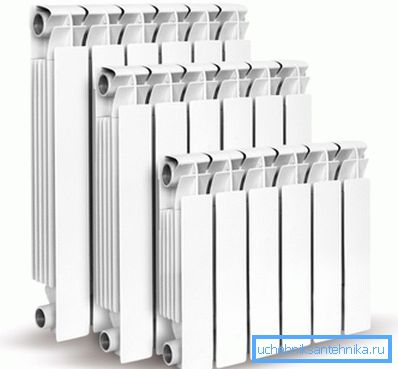
Pipes
As we have already found out, extreme pressure and high temperature in an autonomous circuit are not foreseen. If so, you can save on the pipes: we will choose an inexpensive, lightweight and durable polypropylene.
Since this material has a high coefficient of thermal expansion, we will have to:
- Choose pipes with reinforcement. A layer of aluminum foil will noticeably reduce the elongation when heated.
- To supply long straight sections of the filling with compensators - ring or U-shaped bends.

How to carry out the heating with the use of polypropylene?
For welding pipes with fittings, a low-temperature soldering iron is used. Melted surfaces are fixed in the working position and after 10 - 40 seconds (depending on size) become one.
An important point: the aluminum foil must be removed from the field of welding by stripping (shaver). It will weaken the connection, and in the future it may cause a pipe splitting.
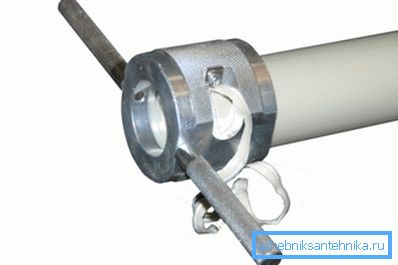
What pipe diameters should I choose?
- For bottling a small (no more than 150 m2 per floor) house - with an outer diameter of 25 mm.
- For connections to radiators - with a diameter of 20 mm.
Additional elements
How is the heating system of a closed type?
In addition to the boiler, pipes and batteries, it has:
- The circulation pump, which sets the coolant in motion.
- Jumper with cold-water to fill the system with water.
- Dumps in the lower points of the circuit, allowing it to completely drain.
- Expansion tank. It compensates for an increase in the volume of coolant with increasing temperature.
- A safety valve that operates when the tank is overfilled and the pressure rises above the calculated one.
- Pressure gauge or thermomanometer to monitor system parameters.
- Automatic air vent.
However: the pump, the vent, the safety valve and (sometimes) the expansion tank are often mounted in the boiler body, effectively turning it into a mini boiler room. Before you go shopping, read the documentation.
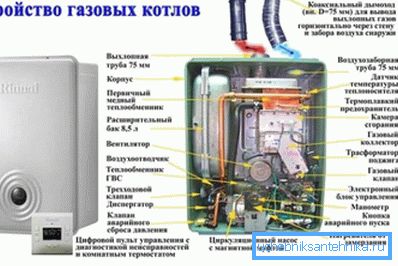
In addition, optional can be installed:
- Separate individual heating devices and sections of the contour of the valve.
- Sump in front of the pump.
- Throttles or thermostats that regulate the temperature of radiators.
- In the upper points of the circuit - additional air ducts.
Layout
How to carry out the heating in a one-story house? According to the author, the best solution would be Leningrad - one-pipe wiring around the perimeter of the floor with radiators connected in parallel to the main bottling. It is absolutely trouble-free and prevents the circulation from stopping in some part of the circuit due to overheating.
How to conduct heating on two floors?
There are two possible options.
- Two rings (one per floor) with a choke, limiting the patency of the shorter of the contours.

- Two-pipe scheme with bottling on the first floor and in the attic and connecting them with risers with heating devices.
How to connect radiators?
For short (no more than 7 sections) heaters, the traditional side connection will be optimal. Longer batteries should be connected diagonally or bottom to bottom.

Conclusion
We hope that our material will help the reader in the selection and installation of heating equipment. Additional information on how to install heating systems with their own hands can be found in the attached video.
Successes!